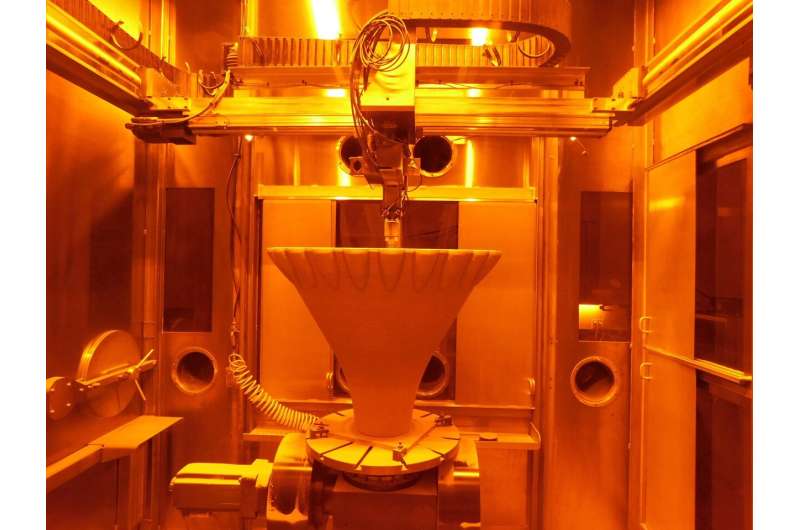
September 13, 2024 by Mike DiCicco, NASA
Collected at: https://phys.org/news/2024-09-propel-industrial-revolution.html
In the fall of 2023, NASA hot fire tested an aluminum 3D printed rocket engine nozzle. Aluminum is not typically used for 3D printing because the process causes it to crack, and its low melting point makes it a challenging material for rocket engines. Yet the test was a success.
Printing aluminum engine parts could save significant time, money, and weight for future spacecraft. Elementum 3D Inc., a partner on the project, is now making those benefits available to the commercial space industry and beyond.
The hot fire test was the culmination of a relationship between NASA and Elementum that began shortly after the company was founded in 2014 to make more materials available for 3D printing. Based in Erie, Colorado, the company infuses metal alloys with particles of other materials to alter their properties and make them amenable to additive manufacturing. This became the basis of Elementum’s Reactive Additive Manufacturing (RAM) process.
NASA adopted the technology, qualifying the RAM version of a common aluminum alloy for 3D printing. The agency then awarded funding to print the experimental Broadsword rocket engine, demonstrating the concept’s viability.Play
PlayA rocket engine nozzle 3D printed from Elementum 3D’s A6061 RAM2 aluminum alloy undergoes hot fire testing at Marshall Space Flight Center. Credit: NASA
Meanwhile, a team at NASA’s Marshall Space Flight Center in Huntsville, Alabama, was working to adapt an emerging technology to print larger engines. In 2021, Marshall awarded an Announcement of Collaborative Opportunity to Elementum 3D to modify an aluminum alloy for printing in what became the Reactive Additive Manufacturing for the Fourth Industrial Revolution project.
The project also made a commonly used aluminum alloy available for large-scale 3D printing. It is already used in large satellite components and could be implemented into microchip manufacturing equipment, Formula 1 race car parts, and more.
The alloy modified for the Broadsword engine is already turning up in brake rotors and lighting fixtures. These various applications exemplify the possibilities that come from NASA’s collaboration and investment in industry.

Leave a Reply